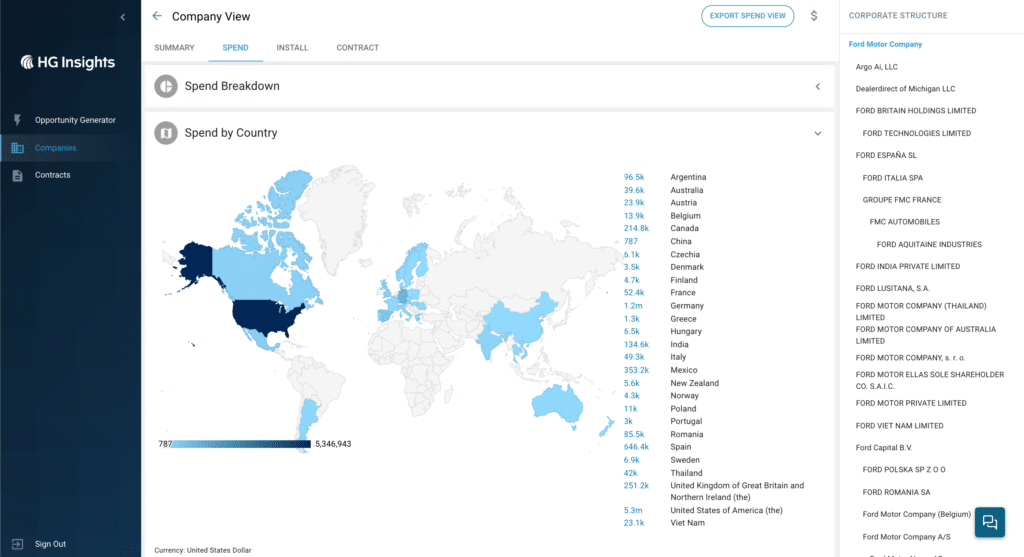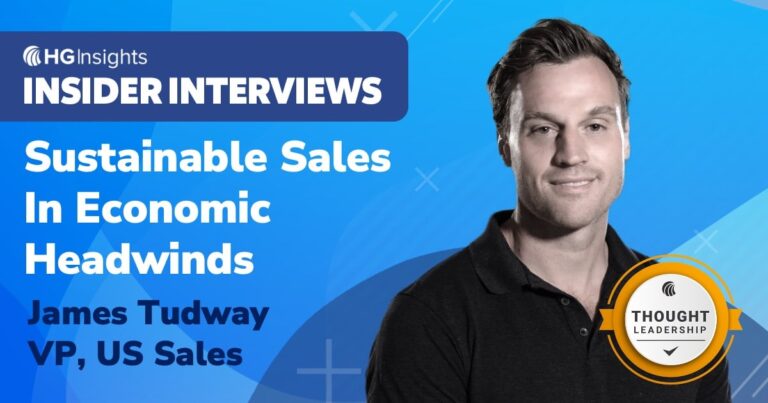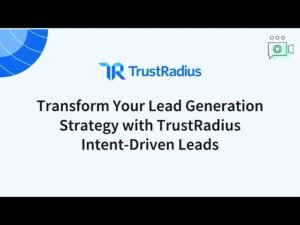Enhance Go-To-Market Productivity In Every Economy
In this edition of Insider Interviews, HG Insights’ VP, US Sales James Tudway explains how to uncover a prospect’s true pain point, rather than a superficial symptom, how to work together with your prospect for organization-wide traction, and the difference between good and great sales teams.
—————
A lot of the sales articles I read teach you about quick tips, secrets, or shortcuts to sell faster.
To me, these articles miss the point. Sales success isn’t just knowing what time to reach out or when to use an email vs. a call. Sales is about hunting for the real problem, the right person, and understanding the process by which change will occur. We are selling change, which although has clear benefits, also poses risks to clients both personally and professionally.
Having led Sales teams’ focused on Annual recurring revenue, creating long-lasting, equitable, and lucrative partnerships has always been our focus. A quick win that isn’t the right fit for either business is not what we are hunting for. Disregard any notion of the stereotypical coin-operated ‘Sales” person. Money is a fantastic by-product of Sales however, it is very rarely the driving force behind great sellers, sales teams, and businesses. But how do you motivate your sales teams to work hard if money isn’t the sole driving force? I’ve found success follows people who are genuinely inquisitive, challenge the status quo and have a business leader mindset. Crucially, people who want to find the root cause of a problem, not the symptom, and are willing to be part of the solution, not just sell you one.
In my 15-year sales trajectory, from a BDR fresh out of university to working as a VP of Sales at a leading B2B SaaS and closing my first four million-dollar deal, I believe I’ve seen how salespeople and sales teams find success. Here are a few things I’ve observed of highly successful, high-achieving, and ultimately fun sales environments.
Always be prospecting: Hunting For Problems
As a leader, you help your team find success by teaching them how to approach problems and make processes, not rushing to find a solution. After many jobs in sales, I’ve seen that salespeople can be guilty of being solutions -hunting for a problem—rushing to find a problem, and then immediately offering a solution.
You have to listen to your prospects, genuinely listen. To take the time to understand and learn about what they’re trying to build, and what specific problems they need to solve, what barriers exist, what their desires and fears are Listening builds trust, understanding and, eventually, helps cultivate the relationship. The key isn’t to prescribe a solution to every single one of their problems. Find the root cause that is causing their business challenge, helping them size the problem and align a solution to the growth trajectory of their business
For example, look around their industry, pain points tend to show up more widespread than you’d think. In some cases, comparable firms (by size, shape, geography, etc.) will have comparable problems. On the other hand, some prospects might have similar symptoms but different problems. The job of a good salesperson isn’t to sell to the symptom—to find the real problem, not the superficial symptom.
By listening to others’ pain points you can help your prospect. By letting them know you’re listening, you show that you understand and you care. By understanding how to fix a customer’s pain points you help them find success.
Solving The Problem, Together
Through building trust — listening and sharing creative solutions, sharing customer testimonials, and laying out the power and use cases of your solution — you make your strongest case.
By now, you’ve done your prospecting properly (mostly done using sales, marketing, and Technology Intelligence), you’ve dived deep to understand your prospect’s individual problems, not the symptom, the problems that are holding them back from achieving growth are the most important. It’s time to help solve their problem together, to show them how much value they’ll get for your solution.
Here’s the tricky bit: When selling innovative solutions you’re probably showing prospects a new product they haven’t tried before. But if you’ve done a good job of identifying their problem, and presenting the power of your solution to solve their problem you’ll be able to get buy-in from your prospect. You’ve identified the problem and hooked them, but getting prospects to become customers isn’t always a straight line. You need to find someone with big enough problems and cares enough to make a change and defend your product or service to the cynics. You need to find the person who wants to put dollars behind solving a problem that will help them over not just the short term but the long term.
You need someone who can help you navigate their buying process — to pay for it, to help you sell internally. You need a champion, but you don’t know any company until you’re inside it.
Delivering: Making Champions
A champion passionately promotes your product or solution, and an internal champion will help you get your deal across the line. It is so valuable to have a champion within a business, as it can help build credibility, and ultimately, sell.
By now you’ve laid the groundwork to create a champion — you’ve built a strong relationship based on trust and understanding, you grasp the complexity of their individual needs, and you’ve found a way to fix the problem with your product. This is how you create an internal champion, but you need to go and deliver on your promises. There are a couple of ways to go about helping customers and making champions:
- Help your customer themselves
- For my customers, the purpose of HG Insights is to empower business innovators with actionable insights to ensure success. Whether that’s showing customers whitespace, which customers to pursue, or how to target and isolate customers, this baseline of accurate, timely, and high-quality data makes a huge difference in decision-making. My customer’s success is my success
- Every department has different visions and goals, so you need alignment to have organizational transformation. Sharing company-wide, agreed-upon data in all decision-making to avoid gut-feeling hunches based on bad information. This is another way my clients can transform decision-making with data-driven insights
- Help your customer’s customers
- The chain of empowering business innovators is long —
- By helping your customer improve their own sales by helping them target best-fit customers for their solution, for example, you’re creating a better ecosystem for all
- Not only does it help your customers to reduce waste of time and effort, misallocated resources, and speed up time to value — they pass these savings on to their customers as well
And, by making their life better you make your life better as well — you retain customers, build stronger awareness and strategic partnerships around your brand and set yourself up for sustainable success.
Creating champions is a powerful way to drive growth and increase brand awareness. They are a valuable asset for your entire business—from sales teams to company reputation and, I believe ultimately, success.
The Difference Between Good and Great
These are some of the most important things I’ve seen that make the difference between good and great sales teams. The best salespeople are always hunting for the right problem, person, and process.
The difference comes down to your team — everything stems from them. It’s not through tips to close quickly or shortcuts to money and power. It’s about having the right mindset from your leaders, then hiring a team with a can-do attitude, a “How can I fix this?” attitude, a tireless work ethic, and devotion to finding the real problem and helping clients succeed.
I often think of the famous quote from Churchill, “Never give up,” and that’s the difference between good and great.

shorten buying cycles
Insights about an organization linked to its technographic profile
HG’s Functional Area Intelligence™, bundled with the HG Universe product, combines insights from the customer’s technographic, firmographic, and intent data.
This solution provides actionable insights into a company’s organization structure so you can create a hypertargeted approach to effectively support sales and marketing initiatives. Our customers use HG’s Functional Area Intelligence™ as part of their strategic initiatives to shorten the buying cycles and improve conversion rates.




